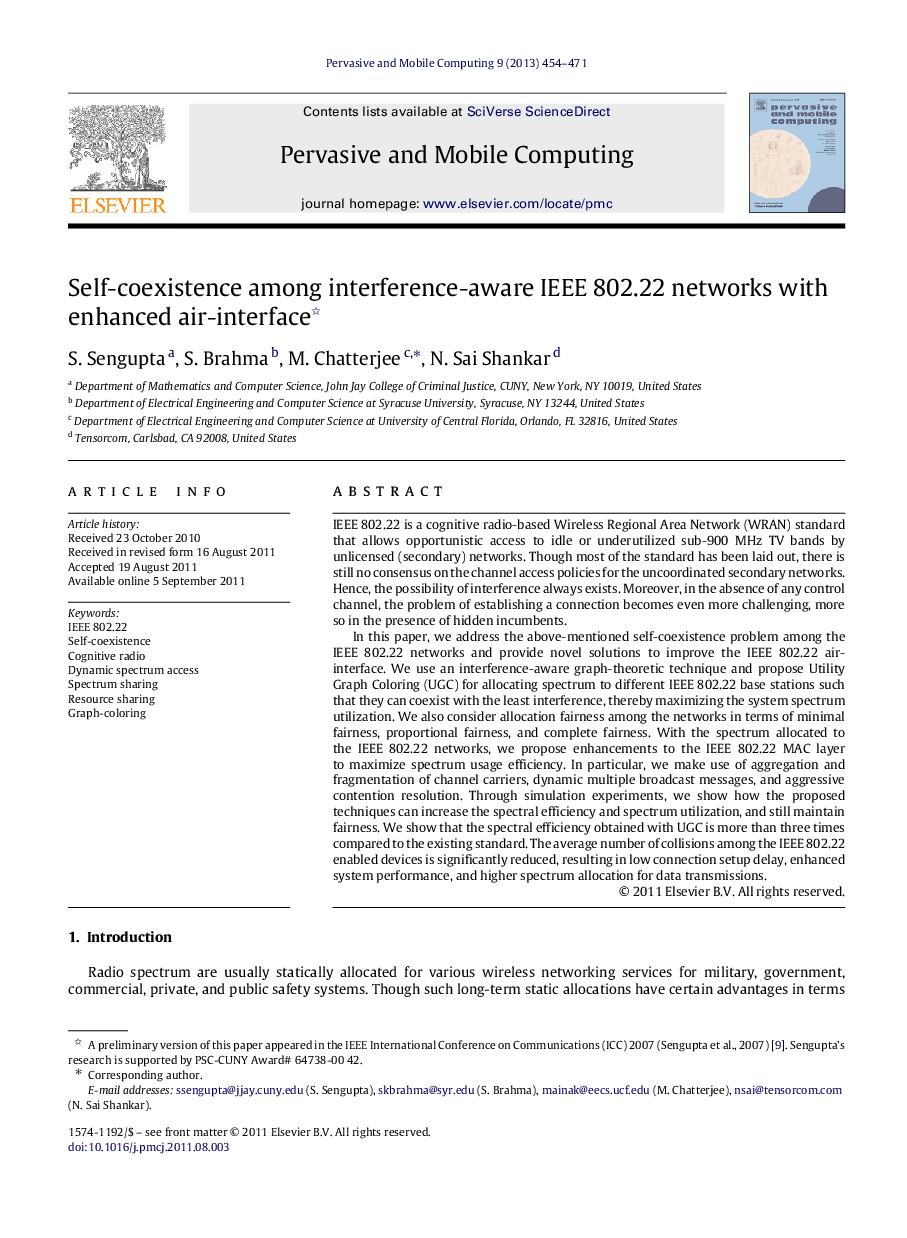| Article ID | Journal | Published Year | Pages | File Type |
|---|---|---|---|---|
| 463902 | Pervasive and Mobile Computing | 2013 | 18 Pages |
IEEE 802.22 is a cognitive radio-based Wireless Regional Area Network (WRAN) standard that allows opportunistic access to idle or underutilized sub-900 MHz TV bands by unlicensed (secondary) networks. Though most of the standard has been laid out, there is still no consensus on the channel access policies for the uncoordinated secondary networks. Hence, the possibility of interference always exists. Moreover, in the absence of any control channel, the problem of establishing a connection becomes even more challenging, more so in the presence of hidden incumbents.In this paper, we address the above-mentioned self-coexistence problem among the IEEE 802.22 networks and provide novel solutions to improve the IEEE 802.22 air-interface. We use an interference-aware graph-theoretic technique and propose Utility Graph Coloring (UGC) for allocating spectrum to different IEEE 802.22 base stations such that they can coexist with the least interference, thereby maximizing the system spectrum utilization. We also consider allocation fairness among the networks in terms of minimal fairness, proportional fairness, and complete fairness. With the spectrum allocated to the IEEE 802.22 networks, we propose enhancements to the IEEE 802.22 MAC layer to maximize spectrum usage efficiency. In particular, we make use of aggregation and fragmentation of channel carriers, dynamic multiple broadcast messages, and aggressive contention resolution. Through simulation experiments, we show how the proposed techniques can increase the spectral efficiency and spectrum utilization, and still maintain fairness. We show that the spectral efficiency obtained with UGC is more than three times compared to the existing standard. The average number of collisions among the IEEE 802.22 enabled devices is significantly reduced, resulting in low connection setup delay, enhanced system performance, and higher spectrum allocation for data transmissions.
